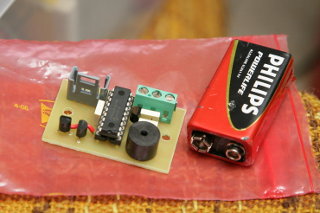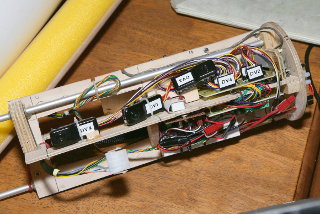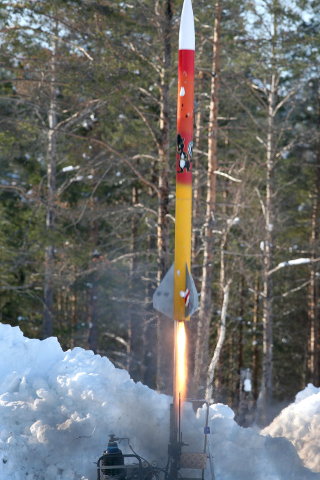
|
Model rockets are a nerdy hobby that can combine aerodynamics,
electronics, radio technology, computer simulation, photography, art,
composite materials and freezing your ass off in winter. Mixing your
own propellants is not required nowadays, so it is also relatively
safe. I have built many small models that fly on A...D motors, and
have contributed to SATS's and
Pollux's joint Haisunäätä
projects, which used J and L class hybrid engines.
I have been responsible for experimental avionics, control
electronics, onboard cameras, data logging and radio beacons:
Here are some photos of:
- the first launch of the
Haisunäätä hybrid rocket
- the second launch of the bigger
Iso-Haisu hybrid rocket
|
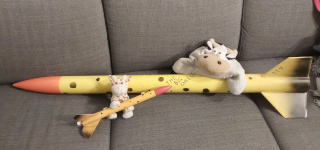
|
Back in the 1990s, we had to get certified just to buy A...D class motors.
Now in the 2020s, with CE marked motors readily available, certifications
are only needed for high power motors. I flew my HPR Level 1 cert
rocket at the ESERO Finland 2025 CanSat
launch in the Söderfjärden
meteor crater in Vaasa. My rocket was of the
same type as the CanSat lifters, SATS
Boreas-5a design, named
"The Big
Cheese". It is shown here next
to the Noris Raketen Jupiter
kit-built rocket "Juusto", which is my first ever rocket,
and my low power cert rocket from the 90s. The smaller of the two furry
bovines was a passenger onboard The Big Cheese.
The Jupiter flew with a Sachsen Feuerwerk C6-3 motor. The Boreas-5a
made just a bit more noise with its Cesaroni Pro38 261H120-14A Red
Lightning.
I'm now starting to plan my Level 2 cert rocket to fly at next year's
CanSat launch. It will perhaps be less cheesy than these two.
|
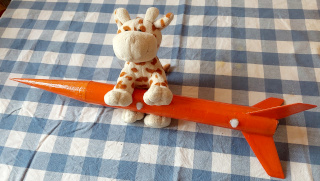
|
Going Supersonic on a G Motor
At the same CanSat launch where I got my L1 certification, I also flew
Iso-Joonappi, a
small fiberglass rocket purpose-built to break the sound barrier on just
a G motor, a Vulcan Systems G82-13.
The idea is my brother Sampo's fault (he's also the originator of
OpenRocket), and the G motor is a
left-over from Vaisala's old
rocketsonde business. With an 868 MHz ISM radio transmitter module
onboard, and an SSB receiver on the ground, I used Doppler shift to
measure the rocket's velocity, and to confirm whether or not it
broke the sound barrier.
|

